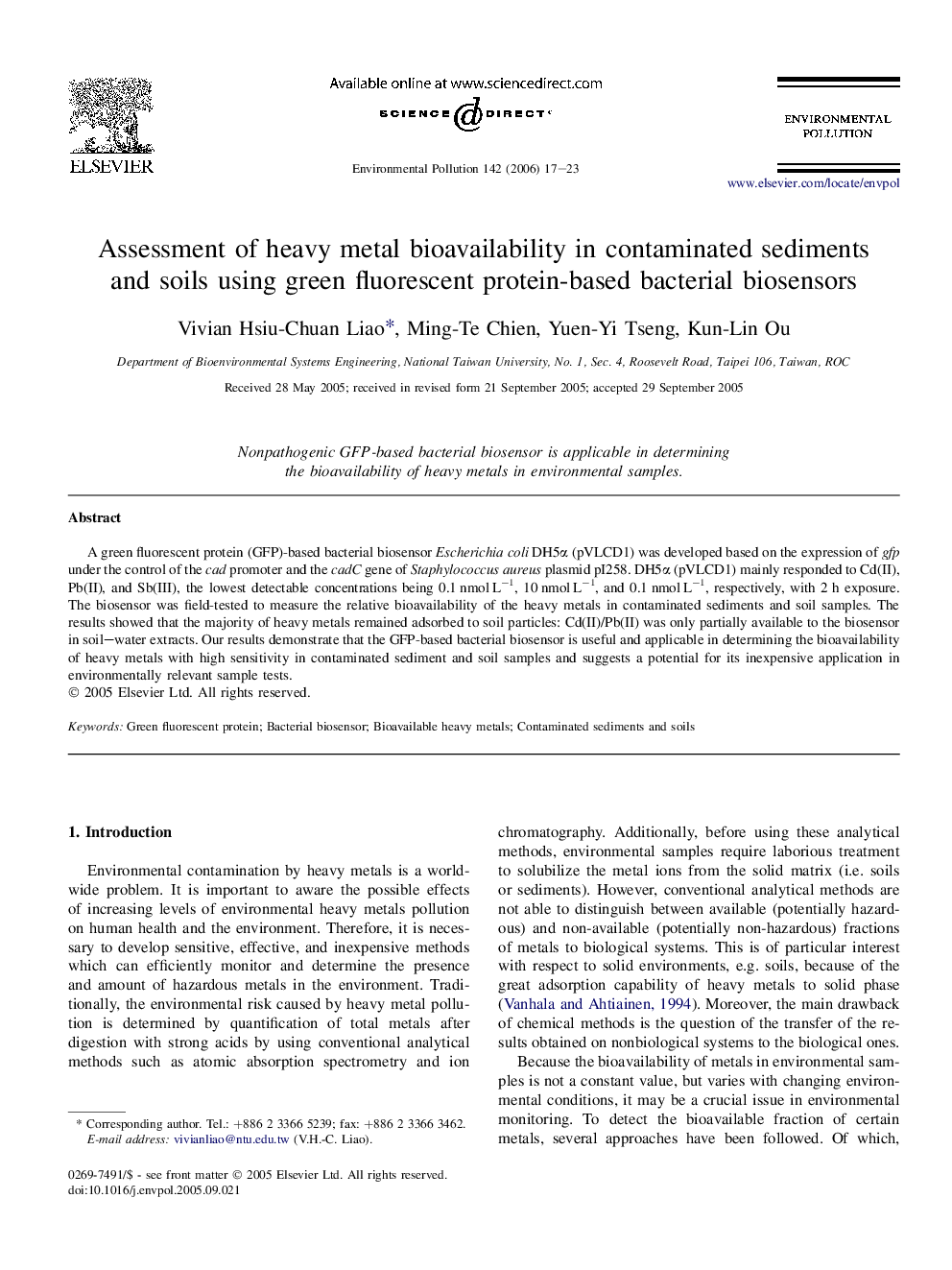| Article ID | Journal | Published Year | Pages | File Type |
|---|---|---|---|---|
| 4428000 | Environmental Pollution | 2006 | 7 Pages |
A green fluorescent protein (GFP)-based bacterial biosensor Escherichia coli DH5α (pVLCD1) was developed based on the expression of gfp under the control of the cad promoter and the cadC gene of Staphylococcus aureus plasmid pI258. DH5α (pVLCD1) mainly responded to Cd(II), Pb(II), and Sb(III), the lowest detectable concentrations being 0.1 nmol L−1, 10 nmol L−1, and 0.1 nmol L−1, respectively, with 2 h exposure. The biosensor was field-tested to measure the relative bioavailability of the heavy metals in contaminated sediments and soil samples. The results showed that the majority of heavy metals remained adsorbed to soil particles: Cd(II)/Pb(II) was only partially available to the biosensor in soil–water extracts. Our results demonstrate that the GFP-based bacterial biosensor is useful and applicable in determining the bioavailability of heavy metals with high sensitivity in contaminated sediment and soil samples and suggests a potential for its inexpensive application in environmentally relevant sample tests.
